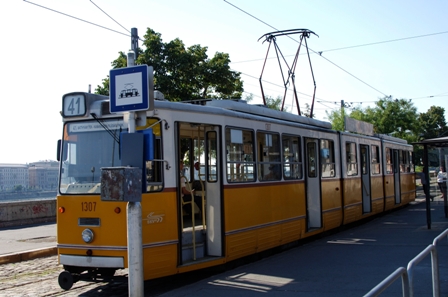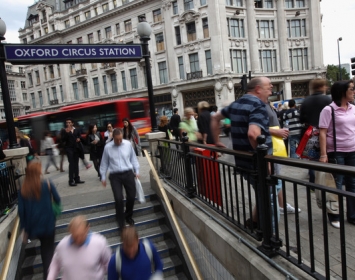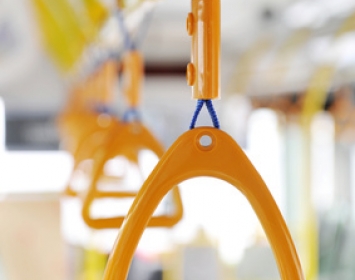Az alábbi leckéből - amelyhez videó és hanganyag is tartozik - megtudhatsz mindent a budapesti tömegközlekedésről.
Letölthető tartalmak
GETTING AROUND IN BUDAPEST

Budapest has a fairly extensive public transportation system. A wide variety of trams, buses, trolleys and underground trains run in the city. Night service is quite reliable, too. Vehicles are usually crowded, mostly during rush hours, and traffic can be rather slow.
Types of tickets and passes

single ticket (vonaljegy): valid on all public transport vehicles for one uninterrupted trip, costs 350 HUF (or 450 HUF if purchased from the driver on board)
single transfer ticket (átszállójegy): valid on all public transport vehicle for one trip with one change, costs 530 HUF
metro section ticket (metro szakaszjegy): valid for up to 3 stops on all three metro lines for one uninterrupted trip within 30 minutes, costs 300 HUF
24-hour travel card (napijegy): valid on all public transport vehicles for an unlimited number of trips from 0:00 to 24:00 on the day indicated, 1650 HUF
72-hour travel card (turistajegy): valid on all public transport vehicles for an unlimited number of trips for 72 hours starting from the time and date you purchased it, costs 4150 HUF
7-day travel card (hetijegy): valid on all public transport vehicles from 0:00 to 24:00 till the sixth day following purchase of the card for an unlimited number of trips, costs 4950 HUF
block of 10 single tickets (tízdarabos gyűjtőjegy): You can tear tickets from the block and use them as single tickets. Costs less than 10 single tickets purchased individually, costs 3000 HUF
Citizens of European Union countries aged 65 and up can use all public transport lines for free in Budapest (they have to show a valid ID to verify age and EU member nationality if asked by a ticket inspector).
The Budapest Metro
Hungary’s capital boasts the first underground metro system on the European continent. It is also the second oldest electrified underground railway system in the world, only the City&South London Railway (now part of the London Underground) of 1980 is older than the Hungarian underground. Line 1 (also known as ‘Földalatti’ or the Millennium Underground) was built in 1896 and added to Budapest’s UNESCO World Heritage entry in 2002. Old stations have been beautifully restored and some of the modern stations on the other lines are also worth a look.
 The first line was constructed to carry passengers from the city centre to the City Park (Városliget). The project was approved in 1870 and the construction began in 1894. It was carried out by the German firm Siemens&Halske AG, employing 2000 workers, using state-of-the-art machinery. The project was completed on schedule and the line was inaugurated on 2 May, 1896 by Emperor Franz Joseph.
The first line was constructed to carry passengers from the city centre to the City Park (Városliget). The project was approved in 1870 and the construction began in 1894. It was carried out by the German firm Siemens&Halske AG, employing 2000 workers, using state-of-the-art machinery. The project was completed on schedule and the line was inaugurated on 2 May, 1896 by Emperor Franz Joseph.
The original line connected Vörösmarty tér with the City Park along Andrássy Avenue, covering a distance of 3.7 kilometres. Trains ran every two minutes, and there were eleven stations. The system could carry up to 35.000 passengers a day.
a wide variety of – széles választéka valaminek
crowded – zsúfolt
rush hour – csúcsforgalom
valid – érvényes
uninterrupted – megszakítás nélküli
to boast – dicsekedni
electrified – elektromos
to add to – hozzáadni
World Heritage – Világörökség
to be restored – helyreállítva lenni
to worth something – érdemes valami
to be constructed – építve lenni
to be approved – elfogadva lenni
construction – építkezés
to be carried out by – valaki által kivitelezve lenni
to employ – alkalmazni
state-of-the-art – modern, korszerű
machinery – gépezet, mechanizmus
to be completed – befejezve lenni
on schedule – időre, időben
to be inaugurated – felavatva lenni
Emperor – császár
to connect – összekötni
to cover – lefedni
distance – távolság






